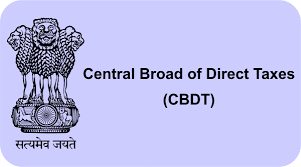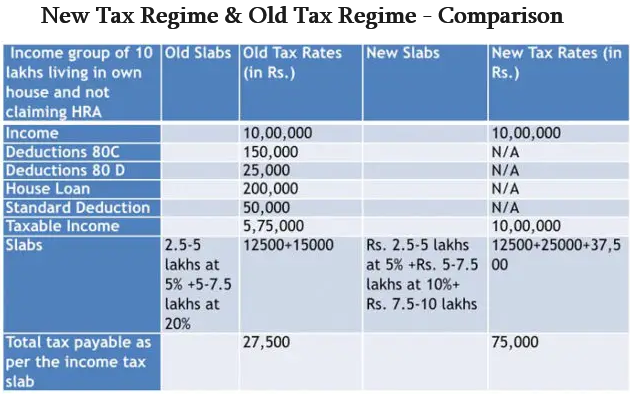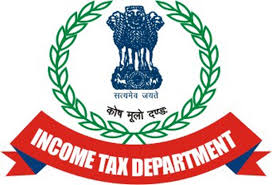 Finance Minister Nirmala Sitharaman has presented the new Income Tax Bill 2025 in Parliament today, February 13, 2025. This presentation marks a significant step in reforming India’s direct tax system.
Finance Minister Nirmala Sitharaman has presented the new Income Tax Bill 2025 in Parliament today, February 13, 2025. This presentation marks a significant step in reforming India’s direct tax system.
Key Features of the Bill
The Income Tax Bill 2025 is designed to replace to the six-decade old Income Tax Act, 1961, with the goal of making direct taxes simpler.
Simplification and Structural Overhaul:
The idea is to get rid of old, confusing parts of the law and make the language easier to understand. Currently, the tax law has 298 sections and 14 schedules, but the new bill aims to shorten this considerably. The new bill is a substantial document at 622 pages, but it’s expected to cut down the number of sections by about 25-30%. This should make it easier for taxpayers to understand the rules and follow them.
Introduction of ‘Tax Year’ Concept:
One key change is the introduction of the term “Tax Year,” replacing “Assessment Year” and “Previous Year.” This aligns India’s tax system with the financial year and international practices.
This change is aimed at simplifying tax compliance and reducing ambiguities in filing returns, aligning with best global practices.
No Change in Tax Rates and Slabs:
The bill does not propose changes to existing tax rates or slabs. The current categories of tax heads including salaries, house property, and capital gains remain unchanged.
Emphasis on Digital Transactions:
The bill strongly promotes digital transactions. It includes provisions for easier electronic record-keeping and tax filing, reflecting the global shift towards digital finance. Virtual Digital Assets (VDAs), such as cryptocurrencies, are now recognized and taxed like other assets.
Residency Criteria with clearer Guidelines:
Under Section 6 of the 1961 Act, an individual was considered a resident of India if they stayed in the country for 182 days in a financial year or 60 days in specific cases. However, Clause 6 of the Bill retains these broad parameters but has brought forth refined provisions for individuals with multiple citizenships or complex residency situations. This change provides greater transparency and eliminates loopholes that were often exploited in international tax planning.
Revised Heads of Income and Deductions
Traditionally, income has been classified into five heads – Salaries, House Property, Business/Profession, Capital Gains, and Other Sources, all of which remains in the new bill. However, Clauses 13 to 59 expand these categories to explicitly include income from virtual assets, digital businesses, and online earnings.
The revisions modernize income classifications while ensuring that new-age revenue streams are properly accounted for under tax laws.
Capital Gains and other deductions Overhaul
The 1961 Act offered various deductions and exemptions under Sections 10 and 80C to 80U, covering investments, donations, and other expenses.
The 2025 Bill, through Clauses 11 to 154, consolidates these deductions and introduces new provisions benefiting startups, digital businesses, and renewable energy investments. Additionally, the standard deduction for salaried individuals has been increased to ₹75,000, providing significant relief to middle-income taxpayers.
The taxation of capital gains, previously covered under Sections 45 to 55A, remains largely intact in the new bill but is dealt with key refinements. Clauses 67 to 91 introduce specific provisions for virtual digital assets (VDAs) and update holding period thresholds for certain asset classes.
Modern investment instruments such as cryptocurrencies and digital securities are also slated to be accommodated within the new provisions by means of these inclusions.
Automation and Faceless Assessments
.Previously, tax administration under Sections 139 to 158 relied heavily on manual processes for return filing, audits, and assessments. The new bill, in Clauses 263 to 389, mandates e-filing, faceless assessments, and automated taxpayer interactions, reducing human intervention and increasing transparency.
Business Thresholds for Presumptive Taxation:
For businesses, the threshold for the presumptive tax scheme is proposed to be increased. Businesses with a turnover of up to ₹3 crore can now opt for this scheme, up from the previous limit of ₹2 crore. The threshold for professionals has also been raised from ₹50 lakh to ₹75 lakh.
Tax Audits and Compliance:
Regarding tax audits, Chartered Accountants (CAs) will continue to be the primary professionals responsible. The bill does not include Company Secretaries (CSs) or Cost Accountants (CMAs) in this role. The emphasis on digital processes and reduced direct interaction aims to improve compliance and lessen the risk of harassment for taxpayers.
Stricter Compliance
The General Anti-Avoidance Rules (GAAR) that had a limited scope under Sections 95 to 102 of the Income Tax Act, 1961 have been significantly strengthened in the new bill. Clauses 178 to 184 provide for broader GAAR coverage, stricter scrutiny of impermissible tax arrangements, transactions lacking commercial substance and enhanced measures against tax evasion.
Non-Profit Organizations
While Sections 11 to 13 of the Income Tax Act, 1961 Act provided tax exemptions for non-profit entities, they lacked detailed compliance measures. Clauses 332 to 355 in the new bill introduce a comprehensive regulatory framework that imposes stricter compliance and reporting requirements to prevent misuse of tax benefits.
Dispute Resolution Mechanism
Under the 1961 Act, taxpayers had access to a Dispute Resolution Panel (DRP ) under Section 144C, mainly for foreign companies. The 2025 Bill, through Clause 275, expands the DRP’s scope and introduces a Dispute Resolution Committee (DRC ) under Clause 379, catering specifically to small and medium taxpayers for quicker and more efficient dispute resolution.
Speedy Redressal
Clauses 268 to 296 of the new bill gives tax officers expanded powers to request asset and liability statements, introduces faceless scrutiny through Clause 273, and shortens reassessment timelines by means of Clauses 279 to 285.
The appellate process has also been streamlined, with first appeals now allowed at the Joint Commissioner level (Clause 356), while the ITAT and High Court procedures (Clauses 362-365) have been simplified for efficiency. A new Board for Advance Rulings has also been introduced through Clause 381 to improve tax predictability for businesses.
Implications for Taxpayers
The immense changes introduced through the Income Tax Bill, 2025 aims to streamline taxation, eliminate ambiguities, and promote compliance through automation, digital inclusion, and modernized tax rules.
The introduction of faceless assessments, expanded digital income classifications, and stricter anti-evasion measures paves the way for India’s tax system to navigate through the next phase of economic growth.
Process and Implementation
After it’s introduced, committees will review it. It will go to the Standing Committee on Finance for their suggestions, and then the cabinet will review it again before it goes back to Parliament for a final vote. The plan is for the new law to take effect on April 1, 2026, which is the beginning of the new financial year.
Major Reform
This new bill is part of a bigger effort to update tax laws, lessen the amount of legal disputes over taxes, and make the tax rules clearer.
The introduction and later implementation of the 2025 Income Tax Bill is a major change to how taxes work in India. The goal is to make tax laws more transparent and simpler, while also adapting to the current economic situation.






